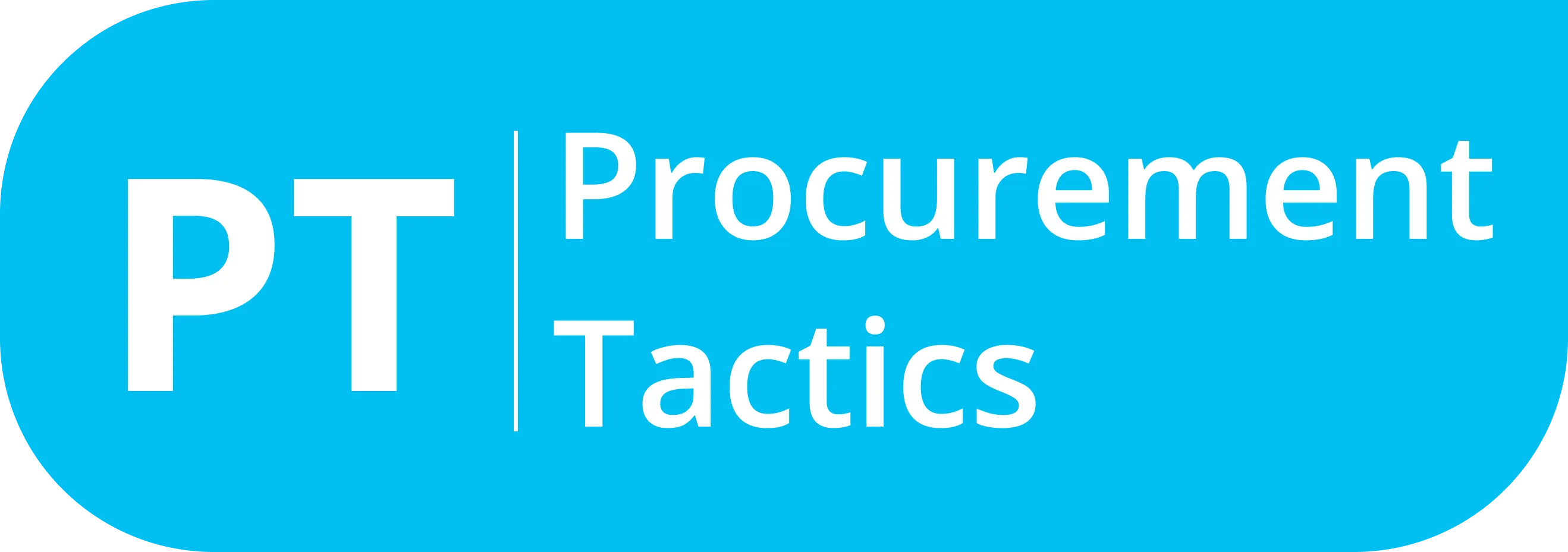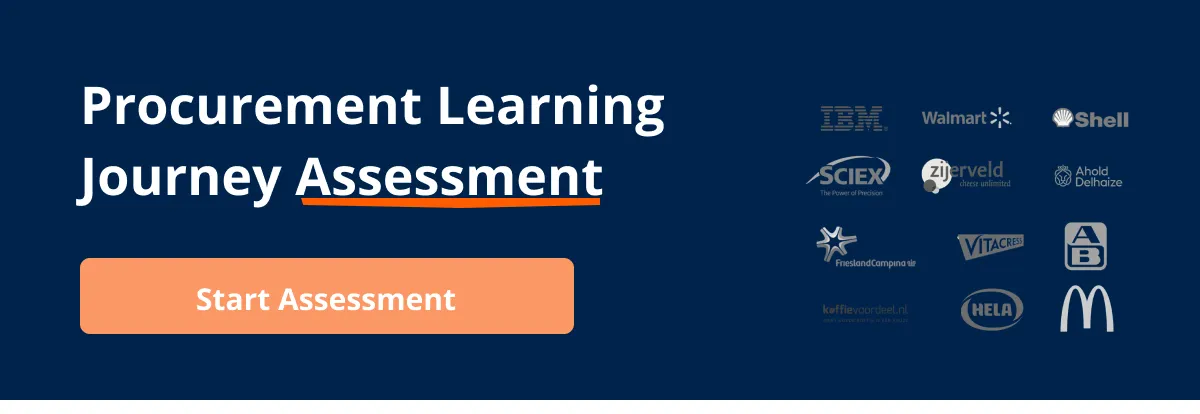Written by Marijn Overvest | Reviewed by Sjoerd Goedhart | Fact Checked by Ruud Emonds | Our editorial policy
RACI Chart — Role Clarity in Procurement
Key takeaways
- RACI chart is a chart used in project management to show who is responsible for each task in a project.
- This chart helps a project manager with an overview of each member’s responsibility in fulfilling a project.
- The Acronym RACI (Responsible, Accountable, Consulted, and Informed) makes it better for procurement professionals to remember what to instill in their work.
In this article, we will tackle the RACI chart and its upgraded version. We are also going to discuss when you should use it and tackle the pros and cons of the RACI+F chart.
Once you finish reading this article, you will have a deeper understanding of the RACI Chart. Thus, allowing you to utilize the matrix better. So without further ado, let’s start!
RACI Chart: What is it?
A RACI chart, also called a RACI matrix, is a chart used in project management to show who is responsible for each task in a project. It’s like a table that lists all the people involved in the project and their roles for each task.
Each role is represented by a letter. Once the roles are defined, the chart helps assign tasks to the right people so the work can start. RACI helps align team members and clarifies their responsibilities within the procurement process.
RACI+F, an upgraded version of the RACI chart, adds the element of “facilitation” to account for the coaching and educational aspects of agile procurement.
In RACI+F, each role or team member is assigned one of five levels of accountability. The highest level is “Accountable” (A), indicating ultimate responsibility for an item or outcome. Procurement leaders typically carry this accountability, while other team members may share accountability for specific outcomes.
“Responsible” (R) designates individuals or roles responsible for performing specific tasks. “Consulted” (C) involves seeking advice or contributions from certain roles, such as procurement analysts. “Informed” (I) participants are updated on progress but don’t participate directly. “Facilitate” (F) is unique to agile procurement and refers to the role of a facilitator or coach responsible for removing obstacles and ensuring smooth collaboration.
Using the RACI+F matrix, procurement teams can assign responsibilities. For example, the procurement manager may be accountable for “managing supplier risks,” while other team members, such as category managers, provide input. Beyond role clarity, the RACI+F chart also benefits individual performance management, professional development, and rewards, as accountabilities can be recorded and tracked within role descriptions, base pay levels, and incentives.
Furthermore, the RACI+F chart enables procurement professionals to improve role clarity, align team members, and effectively manage responsibilities within agile procurement processes.
Facilitation in RACI
The +F in the upgraded version of RACI is called the Facilitator or Facilitation. The +F in Raci, as we told you earlier, refers to the role of being responsible for removing obstacles and ensuring smooth collaboration.
This recent addition to the acronym, not initially part of the RACI matrix, often assumes the most vital role.
The +F are individuals that are accountable for bringing together diverse voices, making sure they work well together, and making sure everyone’s ideas count. They create the setup for meaningful teamwork.
Sometimes, it’s useful to have an outside person like a consultant or someone experienced in leading discussions. Other groups like steering teams, partner agencies, or design teams might also take on this role. Technology can sometimes help with this too, making sure the process goes smoothly.
When Should YouUse It?
The RACI+F chart is helpful for many projects, especially big and complicated ones with lots of people involved. It’s great for tasks that happen at the same time and when different teams work together.
For example, In a company’s website redesign project, different teams work together to make the website successful. The Design Team is responsible for creating the website layout, while the Copy Team takes care of writing the content. The Development Team handles coding and testing the website’s features.
The Sales Team ensures that the website supports their sales strategies and includes the necessary information to attract customers.
The Marketing Team works closely with the Design and Copy Teams to maintain consistent branding and an effective marketing message.
The Finance Team is involved in budgeting and allocating resources for design, development, and marketing.
The Business Development Team provides suggestions for new features or improvements that align with the company’s growth goals.
To keep things organized, the project manager uses a RACI+F chart:
R – Responsible:
- Design Team (responsible for the layout)
- Copy Team (responsible for the content)
- Development Team (responsible for the coding and testing)
A – Accountable:
- Project Manager (takes the overall responsibility)
C – Consulted:
- Finance Team (input on budget)
I – Informed:
- Sales Team (kept updated on progress)
- Marketing Team (kept updated on progress)
- Business Development Team (kept updated on progress)
F – Facilitation:
- Project Manager (ensures smooth communication between teams)

Pros and Cons of The RACI+F Chart
In project management, being more organized and having clearer communication is usually a good thing.
So, the advantages of using a RACI chart in a project are usually much more important than any downsides.
However, it’s important to remember that making the chart takes time at the start, and the roles might be inflexible. Here are some of the pros and cons of utilizing the RACI+F chart:
Conclusion
A RACI chart is a useful chart in project management that helps show who’s responsible for tasks. Thus, helping teams work together well, especially on big projects. The upgraded RACI+F version adds “facilitation” for better teamwork.
While RACI+F has advantages like clear communication and better teamwork, it needs time to set up. Sometimes roles might not fit perfectly. Nonetheless, the chart is good for avoiding confusion and catering to too many unnecessary opinions.
However, people might not use the chart later, especially if you failed to implement it strictly on the project.
Using RACI+F is usually more helpful than not. It’s like a map that guides everyone in their responsibility in a project.
Keep in mind that you should not use RACI just to divide and isolate people into roles that could keep their ideas apart. Some individuals dislike RACI because they’ve seen it used to create harsh systems where responsibility is given, but then penalties come if things aren’t done by certain times.
This way of using RACI usually misses the part about the “+F” and mostly just keeps people apart instead of making them work together.
Frequentlyasked questions
What is the RACI chart?
The RACI chart, also called a RACI matrix, is a chart used in project management to show who is responsible for each task in a project.
What is the RACI+F chart?
The RACI+F chart is an upgraded version of the RACI chart that adds the element of “facilitation” to account for the coaching and educational aspects of agile procurement.
When should I use the RACI+F chart?
The RACI+F chart can be used for many projects. However, it is more effective in projects that are big and complex with numerous people involved.
About the author
My name is Marijn Overvest, I’m the founder of Procurement Tactics. I have a deep passion for procurement, and I’ve upskilled over 200 procurement teams from all over the world. When I’m not working, I love running and cycling.


